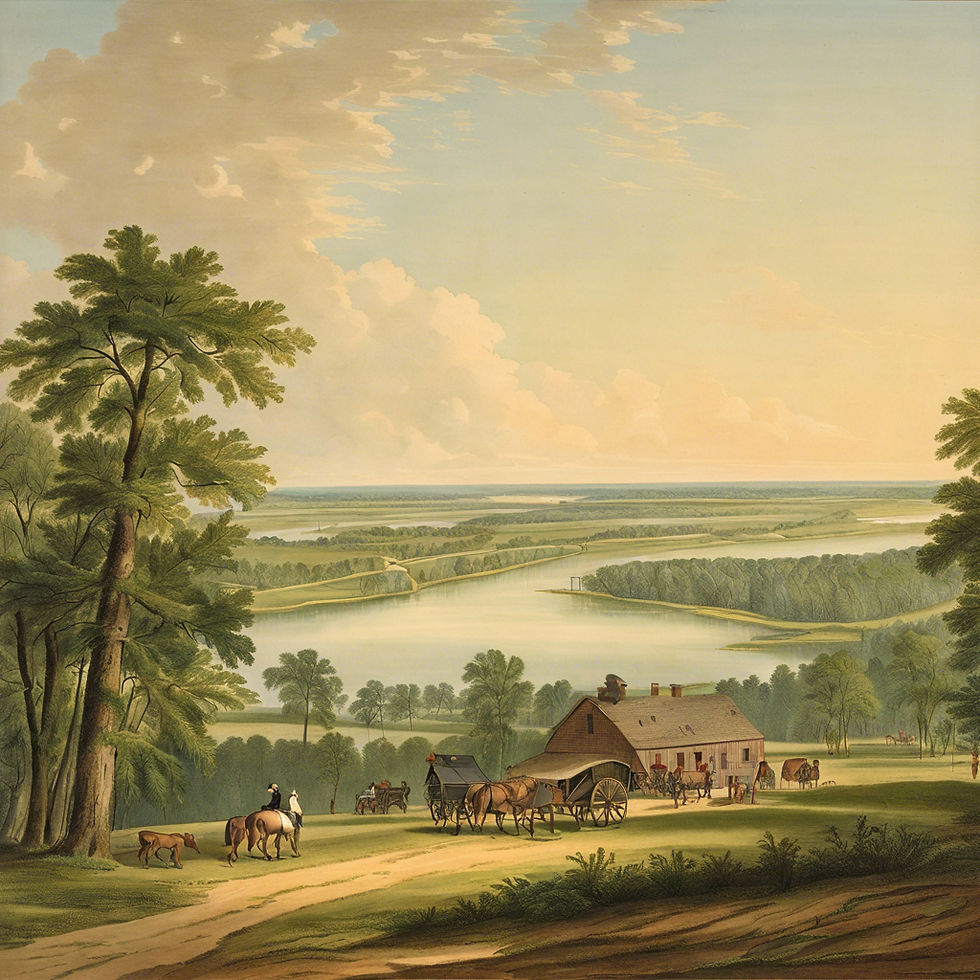
SERVITUDE IN TALLAPOOSA
Preserving the names and stories of the enslaved individuals from Tallapoosa County, Alabama, is a vital step in honoring their humanity and ensuring their legacies are not forgotten. This effort involves piecing together historical records, oral histories, and community efforts to shed light on the lives of those who endured slavery in this region.
Slavery was abolished in Alabama at the end of the Civil War in 1865. The Freedmen's Bureau helped former slaves assimilate into society. During Reconstruction, Alabama passed black codes that limited the freedom of former Black slaves.
Deaths of Enslaved in Tallapoosa, Alabama part 1
file:///C:/Users/April%20Holdridge/Downloads/Genealogy_file_copyrite_blank%201.pdf
Deaths of Enslaved in Tallapoosa, Alabama part 2
file:///C:/Users/April%20Holdridge/Downloads/Enslaved_Tallapoosa_part2_2025%20(1).pdf
Deaths of Enslaved in Tallapoosa, Alabama part 3
file:///C:/Users/April%20Holdridge/Downloads/DeathsEnslavedTallapoosa,Alabama_p3.pdf
Education
1850
In 1850, individuals in white slaveholding families in Alabama, not including the largest cities, represented approximately half of the total white population. Regarding the ratio of slaves to white individuals, there were 80 slaves for 100 whites in Alabama (342,844 slaves compared to 426,514) in 1850. This ratio slightly increased by 1900, with 83 slaves for every 100 whites (827, slaves to 1,001,132 whites).
The Enslaved
Enslaved people were brought into the region even before it became the State of Alabama; that is, in 1701, when it was still a part of France's Louisiana Colony for tilling and plowing the land [6]. However, the demand for enslaved people increased considerably in later years because the cotton crop was highly labor-intensive. For example, according to some estimates, a single person took five days on average to remove seeds from 100 bales of cotton. Therefore, there was a constant demand for labor. To meet the growing demand for enslaved people in Alabama during the 1800s, slave traders chained Negroes in coffees. They made them walk several miles from the Upper South to the Lower South, including Montgomery. By the 1840s, enslaved people were transported by steamboats and railroads. Steamboats transported enslaved people on the Alabama River from Mobile to Montgomery. Hundreds of enslaved people were brought to Montgomery, which turned it into a major slave trading center in Alabama by 1860. Table 1 shows the inter-census percent change in the slave population of the enslaved person states from 1790 through 1820. In the decade between 1810 and 1820, the Alabama population increased by nearly 1,000 percent, and the slave population grew by 1,532 percent. In 1820, there were 41,879 enslaved people (or about 30% of the total population of 128,000) in Alabama, which had grown to 435,080 enslaved people (or 45% of the total population) by 1860— or over 10-fold in 40 years. In contrast, the white population increased by only six-fold. Dallas County, the center of the Black Belt, had the highest number of enslaved people, 25,760, in 1860.
Value
Slave traders in Mobile and Montgomery transported and sold slaves for average price of several hundred dollars. Males aged 17 to 35, capable of working in the fields, often commanded prices exceeding $1,000.
Salina
A woman who spent 42 years as a slave before escaping and marrying Elbert Ash. She had five mulatto children with Ash.
Per Salina's Family
My grandmother Salina (five generations removed) had a master who was reluctant to free his slaves; however, my grandmother had a different plan. After hiding her older children in the nearby woods, she went into the Master's house and prepared the evening meal. After the house had settled for the evening, she returned to her cabin, and bundled up her babies, and walked away from the plantation. When she stopped to make a home for herself and her youngest five mulatto children, she was in Chambers County, Alabama. Salina had walked away from the Kimbrough Plantation in Tallapoosa County, Alabama, and reached a place she could call home.
Salina had spent all fourty-two years of her life as a slave. As a child, Salina, her mother Patience, and all eighteen of her siblings were the property of Dr. Nathan Crawford of Appling, Georgia. When Dr. Crawford's oldest daughter was married, Salina, her sister Angeline, and all their children were given to the daughter as a wedding present. The daughter, Mary Ann Crawford and her husband (Kimbrough) moved to Tallapoosa County, Alabama.
A few years later, after escaping slavery, Salina married a man named Elbert Ash. In the 1870 census record, her five mulatto children were in the home with her, but they were listed under the name of Kimbros (Kimbrough). In 1871, Salina would give birth to a son named Thomas Ash. Salina would live only thirteen years as a free woman. She died in August of 1878, and is buried in Providence Baptist Church (a white church off hwy 50) Cemetery in Chambers, County, Alabama.
After their mother's death, Salina's five mulatto children changed their names back to Crawford (the oldest ones being born on the Crawford Plantation) with the hope of locating their oldest siblings, and other relatives. By 1880, all of Salina's children, with the exception of Thomas, were listed as Crawfords in all of the official documents.
In 1978, one hundred years after Salina's death, over 100 of our family members gathered in Washington, D.C., and held our first family reunion. Thirty years later, while representing ten generations, Patience's and Salina's descendants are still gathering to celebrate family. Through the years, our names have changed, as well as our social econmical backgrounds. We no longer have to identify with the name of "the 'ol masser", because we have made names for ourselves, but because we are not ashame of our past, we proudly claim the Crawford-Ash name.
Across the State
Montgomery
1. Henry, a carpenter aged about 55 years,
2. Anderson, a carpenter, aged about 40 gears,
3. Bachus, carpenter, aged about 45 years.
4. Stephen, a carpenter, aged about 35, years.
5. Blunt, a carpenter aged about 25 years;
6. Thomas, a carpenter, aged about 10 gears.
7. Sam is a painter, aged about 30 years.
8. Russel, aged about 20, is a good waiter and carriage driver.
9 Charles, aged about 26 years.
Terms of sale made known on day of sale.. THOMAS H. WATTS.
* '''1862 Newspaper''': "Slaves, Alabama, History" Newspapers.com<br/>Montgomery Daily Mail (Montgomery, Alabama) Sun, Dec 21, 1862, page 4<br/>{{Newspapers.com|163820447}} (accessed 24 January 2025)
RESEARCH
Petition #20185833
Tallapoosa County, Alabama. February 1858. - July 5, 1859.
Court: Chancery
Salutation: To the Honlb James B. Clark Chancellor of the Middle Chancery Division of the State of Alabama
Mary Shepherd
A former slave whose narrative was compiled by the Works Progress Administration in the 1930s.

*https://ldsgenealogy.com/AL/Tallapoosa-County-Minority-Records.htm
* https://www.familysearch.org/search/catalog/1016564
*https://chroniclingamerica.loc.gov/titles/places/alabama/tallapoosa/
* https://russelllandshistory.com/john-benson.html
* https://freepages.rootsweb.com/~fww64/genealogy/martha1812.html
*https://ugapress.org/book/9781603061384/carolina-planters-on-the-alabama-frontier/
*https://www.lakemagazine.life/lakemartinliving/tales-of-dadeville/article_95e1ed0e-034c-11eb-b0c0-3b61e53a8c6e.html
*http://files.usgwarchives.net/al/tallapoosa/bios/g6320001.txt
*https://www.google.com/books/edition/A_Digest_of_the_Laws_of_the_State_of_Ala/ejFKAAAAYAAJ?hl=en&gbpv=1&dq=slavery+tallapoosa+alabama&pg=PA242&printsec=frontcover
*https://www.google.com/books/edition/Imagery_of_Lynching/O3ZldmMty7UC?hl=en&gbpv=1&dq=lynching+tallapoosa+alabama&pg=PA60&printsec=frontcover
*https://dlas.uncg.edu/petitions/petition/3507/
*https://digital.archives.alabama.gov/digital/collection/supreme_court/id/14186/
*https://npshistory.com/publications/hobe/braund-2017.pdf
*https://dlas.uncg.edu/petitions/petition/20184901/
*https://alabamamosaic.org/vufind/Record/ADAHwpa826/Similar
*https://www.crrjarchive.org/incidents/374
*https://www.newspapers.com/image/271691795/?match=1&terms=lynched%20tallapoosa





